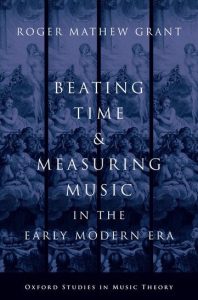I’ve just added Roger Grant’s Beating Time and Measuring Music in the Early Modern Era as my top choice for books on music theory for those interested in music-dance relationships (see my metre and rhythm page for a brief bibliography on that topic). I don’t want to say too much, because it figures largely in a chapter in my PhD, and it’s too detailed and scholarly a book for me to summarize hastily. Suffice it to say, if you want to know what I think about time signature and meter and movement, it’s all in this book. I’m glad I hadn’t read it when I was writing How Down is a Downbeat?, a journal article on music, ballet teaching and time signature that I wrote a few years ago; it would have tempted me to rewrite the whole thing. On the other hand, I wish I had read it when I first started teaching music for dance teachers back in 2000. However, some of the significant books and articles that Grant refers to in building his theory were published some years later than that. Is theory even the right word? I’m not sure: it’s history, but in order to understand the history, you have to change your ideas about what you thought was music theory. It’s amazing that in the 21st century, we’re still solving the problems unexamined or hidden by “rudimentary” music theory, e.g.—to name but one— why is a 6/8 called a compound time signature? What’s compound about it?
The biggest problem with what is conventionally called “music theory” is that it presents as simple and straightforward (a matter of counting two or three) something which is exasperating in its complexity, not least because “time signature” as a subject leaves out the people who use it and the way they interpret it, but it is virtually meaningless without the (changing) practice in which it is embedded. I’ve hinted at this in many of my more recent postings on triple meter and Rothstein’s theory of “Franco-Italian hypermeter.” Grant discussed the way that the meaning of beat as movement has gradually disappeared, morphing into the concept of time as a endless stream of motionless, durationless ticks. This in fact was exactly how I used to teach music theory and meter, without realising the entailments or history of my own beliefs about what meter or musical time was.
I am in awe of the way that Grant makes sense of such a complex assemblage of notation, musicians, practice, ideas, primers, teachers, and so on. It’s only when you’ve struggled to sort out some of these problems yourself that you realise how courageous and hard-working someone else has been at grappling with similar issues.


